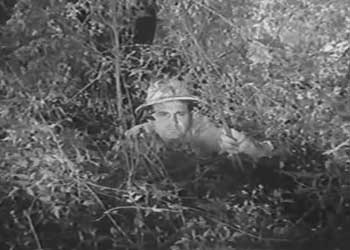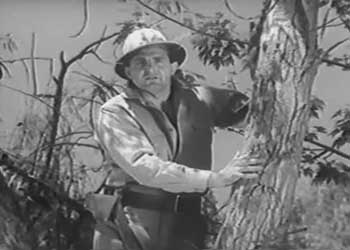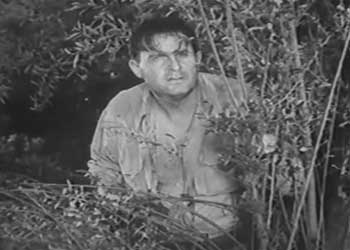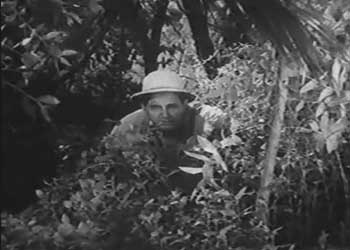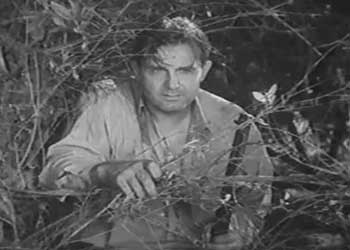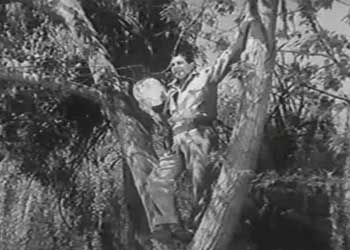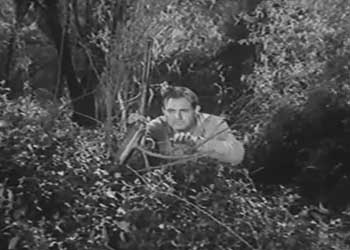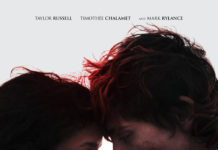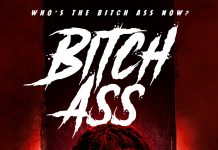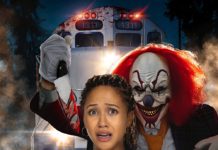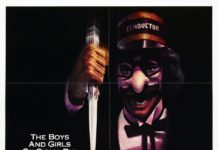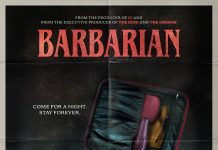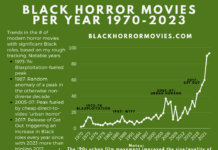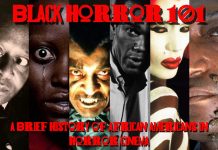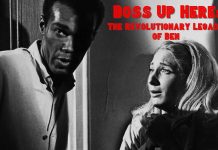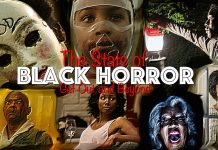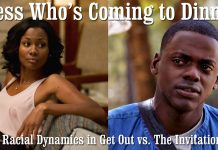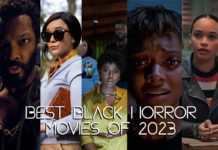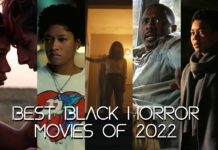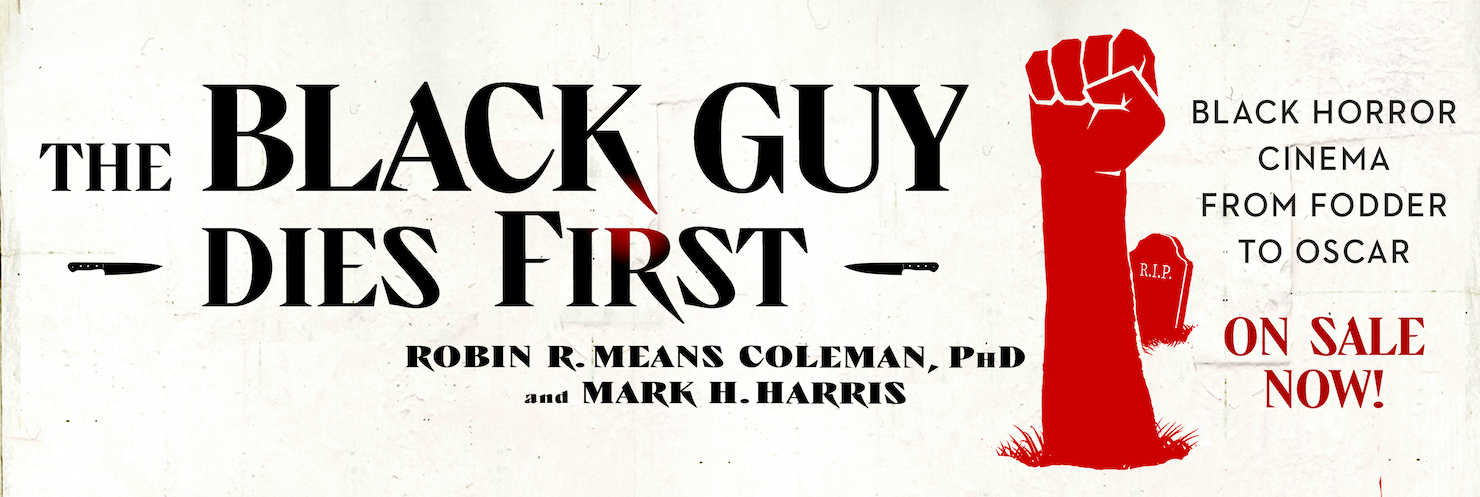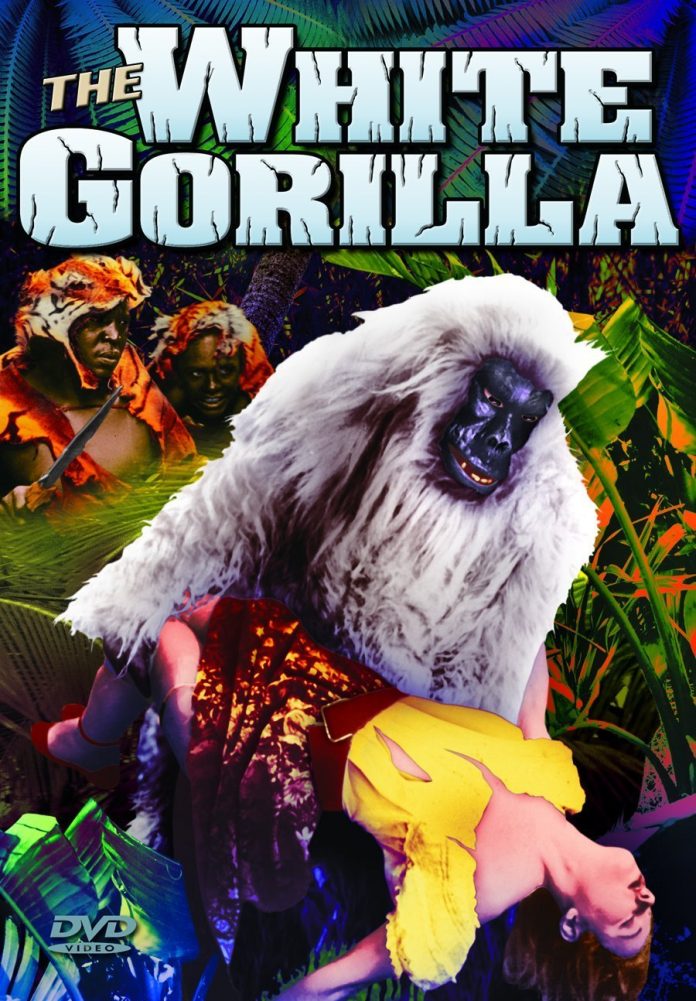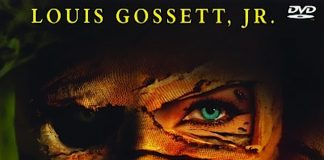This is more of an adventure film than horror, but given the fine line in gorilla-centric fare back in the ’40s, you can cut me some slack. The reason I’m including The White Gorilla on this site is that while watching it, I couldn’t help but feel like Richard Dreyfus in Close Encounters of the Third Kind: “This means something.” And something more than just a pair of guys tickle-fighting in low-crotched monkey suits — which, as entertaining as it sounds, lacks the grandeur of what could be interpreted as a commentary on race relations and imperialism.
The White Gorilla opens as so many cheap jungle films of this era do — with stock footage and a pompous voiceover spewing run-on sentences about the viciousness of Africa’s native wildlife and people :
The jungle: weird, mysterious, home of countless beasts of prey, with their thunderous roars and haunting cries, echoed by the somber beat of distant drums, drums that tell of natives hidden in its vastness, with its paths leading to unseen, unheard of dangers. The jungle: to which countless and daring explorers have fought their way seeking to verify the truth of the strange and fantastic stories that have veiled this land of mystery, some of them never to return, victims of the savage tribes who call the jungle theirs, some to fall before the flashing fangs of jungle beasts.
The narrator turns out to be Steve Collins (Ray “Crash” Corrigan), the single most un-heroic hero in cinematic history. Granted, his lack of heroism stems from the fact that his scenes, filmed in the 1940s, are spliced with a silent serial from 20 years earlier called Perils of the Jungle, thus relegating Collins to hiding in the bushes and “watching” the action that takes place in the other film.
Since he can never interact with the characters in the other film, he’s always off screen, narrating through voiceover what’s going on. Even with this in mind, though, it’s hilarious to see the excuses Collins makes for not taking part in the action, particularly considering his comrades are in constant danger. He’s either off searching for firewood, or there are lions in the way, or he just decides to stay “well to the rear” (insert anus joke here). Near the end of the footage from the older movie, Collins watches (from his favorite spot, the bushes) as natives sacrifice his supposed pals: “Alone, single-handed, I knew I could do nothing. I managed to get away without being seen.” Whew, that was close; he was almost seen!
While the 1920s portion of the story features typically sinister African native stereotypes, it’s the 1940s portion that contains the most intriguing — and most cryptic — “messages.” The new footage revolves around a white gorilla who’s ostracized from the other gorillas because of his color, thus turning him into a raging beast. He eventually does battle with a black gorilla for control of the jungle. Neither one wins, but Collins, in a rare moment of action, ends up shooting the white gorilla dead.
It’s not hard to read this as some sort of allegory — especially when the film ends with Collins delivering a rambling speech about how the jungle belongs to the natives and the animals and that he’s going to quit his job as a guide (alas, not soon enough for his last customers) — but what does it mean exactly? Are white people pitiable monsters? Are black people cliquish enablers? Should all race wars be fought in head-to-toe synthetic fur with a thin veil of bestial homoeroticism? I, for one, say “yes”.
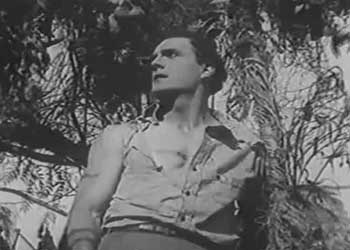
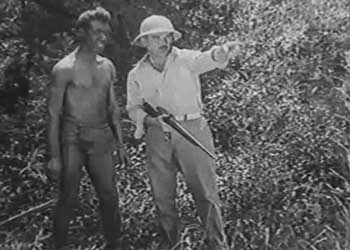
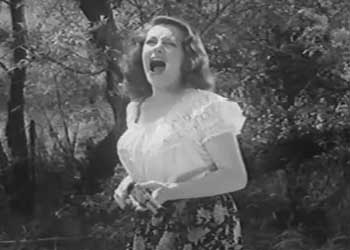
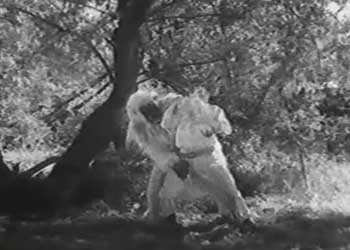
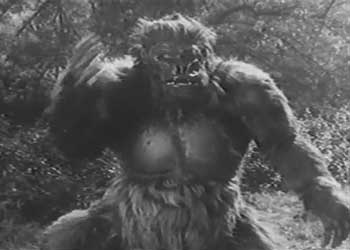
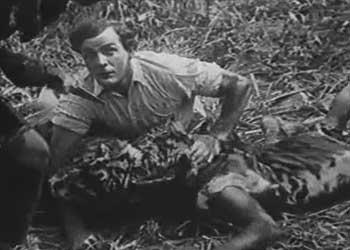
And now, Crash Corrigan, “action” star and peeping tom:
